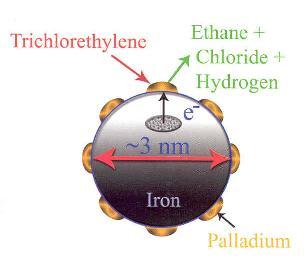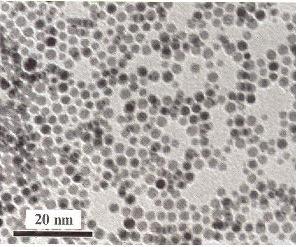Contribute
| Technology - Nanoscale Processes for Environmental Improvement |
National Nanotechnology Initiative
04/12/2004
(This article is sponsored by The Boston Group)
Challenge
Pollution has long been recognized as a serious threat to both local and global
environments and to our quality of life. The development of new technologies that
enable industrial economies without harming human health and environments is of
critical importance in the 21st century. Development of innovative technologies for
manufacturing, transportation, and other activities that reduce or eliminate the
production of harmful by-products, or for treatment and remediation of existing toxic
substances in the environment, presents major challenges for our society.
Vision
Nanoscale science and engineering can significantly improve our understanding or molecular
processes that take place in the environment and help reduce pollution by leading to the
development of new \"green\" technologies that minimize the use, production, and transportation
of waste products, particularly toxic substances. Environmental remediation will be improved by the
removal of contaminants from air and water supplies to levels currently unattainable, and by
the continuous and real -time measurements of pollutants. In addition, increasing knowledge of the environmental, social, and human health implications of nanotechnology is critical.
In order to understand the consequences of contaminants moving through the environment,
interdisciplinary research is needed on molecular and nanoscale processes that take place at
one or more of the interfaces or within nanoscale structures of natural systems. Such research
includes studies of inorganic/inorganic, inorganic/organic and organic/inorganic interfaces,
with a focus on the specific processes dominated by small length scales. Separation science -
exploring the evolving capability to tailor nanostructured membranes - offers new
opportunities to selectively extract contaminants from air, water and soil.
Research Example:
Treatment of Contaminated Groundwater with Iron Nanoparticles
Researchers at Lehigh University recently found that nanoscale particles of metallic
iron could potentially play a large role in the remediation of contaminated ground water.
Interaction between iron and pollutant trichloroethylene (TCE) results in the
degradation of TCE to more environmentally benign products. Palladium or platinum is
added to the nanoparticles to enhance the rate at which this reaction takes place. The
researchers carried out a field demonstration at an industrial site in which
nanoparticles injected into groundwater plume containing TCE reduced contaminants
levels by up to 96%.
The figures on the right show the schematic depiction of the remediation process in which iron nanoparticles transform a contaminant (trichloroethylene) in water into more environmentally bening products.
A wide variety of contaminants (including chlorinated
hydrocarbons, pesticides, explosives, polychlorinated biphenyls, and perchlorate) have
been successfully broken down in both laboratory and filed tests. The potential for
remediation stems from the high reactivity of the nanoparticles and the fact that the
technology is portable and highly scalable. The high reactivity of these particles can be
attributed to their extraordinarily large surface are (~33.5 m^2/g). With an average
particle diameter of less than 100 nanometers, the particles are injectable and can be
delivered to contaminant hot spots or source areas as needed.
You may also access this article through our web-site http://www.lokvani.com/

Elemental iron acts as an electron (e-) donor while trichloroethylene serves as the electron acceptor for the chemical reaction. The presence of palladium metal on the surface of the iron nanoparticles enhances the transormation.

A electron microscope image of the iron nanoparticles.
(courtesy W. Zhang, Lehigh Univ.)
